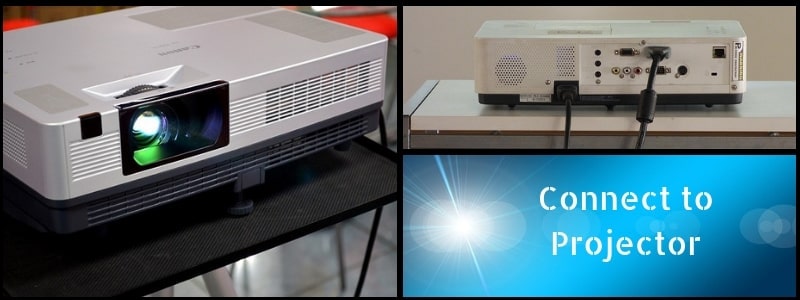Do you present a lot? Or are you a trainer who’s reliant on a location’s projector connection? Or do you frequently encounter problems when setting up the projection equipment?
One thing I know from experience, if you have trouble with the connection, it eats into valuable presentation time. Either one of three things can happen: 1) The connection goes smoothly 2) You have a few hiccups but eventually everything works or 3) You must abandon the presentation all together because the two systems are not talking to each other.
Here’s a step-by-step guide to avoid confusion and frustration when going from laptop to projector.
How to Connect to Projector
One to Two Weeks Before Presentation
- Before you go onsite, ensure your display driver, bios and graphic driver are up-to-date.
Not sure where to start? Go to the laptop’s manufacturer and see if there are any updates. Be sure to update it at least a few days before your presentation.
When Onsite
- Turn off laptop and projector.
- Connect laptop to projector.
Use one of the following:- HDMI – a standard HDMI cable can connect directly from and to both devices.
- DisplayPort – with many laptop brands including Microsoft Surface, Lenovo and Dell you can use a DisplayPort cable to HDMI cable to projector.
- VGA – connect this cable to projector.
- Wireless – if you are connecting to a TV or monitor and have a Microsoft Wireless Display Adapter, Roku Streaming or Chromecast stick in the monitor, you can connect to this device by holding the Windows Key and pressing P to Connect to a wireless display.
- Turn on the laptop and then turn on the projector.
Once the projector is up and running, if the presentation doesn’t display, make sure the signal source is correct. For example, if you are connected via a VGA cable, make sure the signal from the projector shows VGA.
- Once you are physically connected, hold down the Windows Key, press P and choose your setting. There are four: PC Screen Only, Duplicate, Extend or Second Screen Only. You will want one of the last three.
- Duplicate is just what it states – what’s on the projector is on your screen.
- Extend is useful for presentations where the user wishes to display one screen to the audience while accessing notes from their laptop.
- Second Screen is when the presentation is only visible on the projector.
Trouble Shooting Tips
What if nothing appears on the projector?
First, check the input settings on the projector. Click the Input button until the presentation displays.
Second, ensure the cable between the laptop and projector are tightly secured. Check the power cords, too.
Third, if you still have no display, select Start and shut down your computer. Once it’s complete, wait ten seconds and power it up.
Fourth, if the presentation still doesn’t display, swap out the laptop and try again.
Last, if you still don’t have a projection, call the IT department.
Hartford Technology Rental has the Best Projector Rentals
Whether you need a standard meeting room projector rental or HD projector, you’ve come to the right place. Want to keep it super easy? Simply tell us your audience size and room specifications and we’ll provide you with the perfect projector rental kit.


